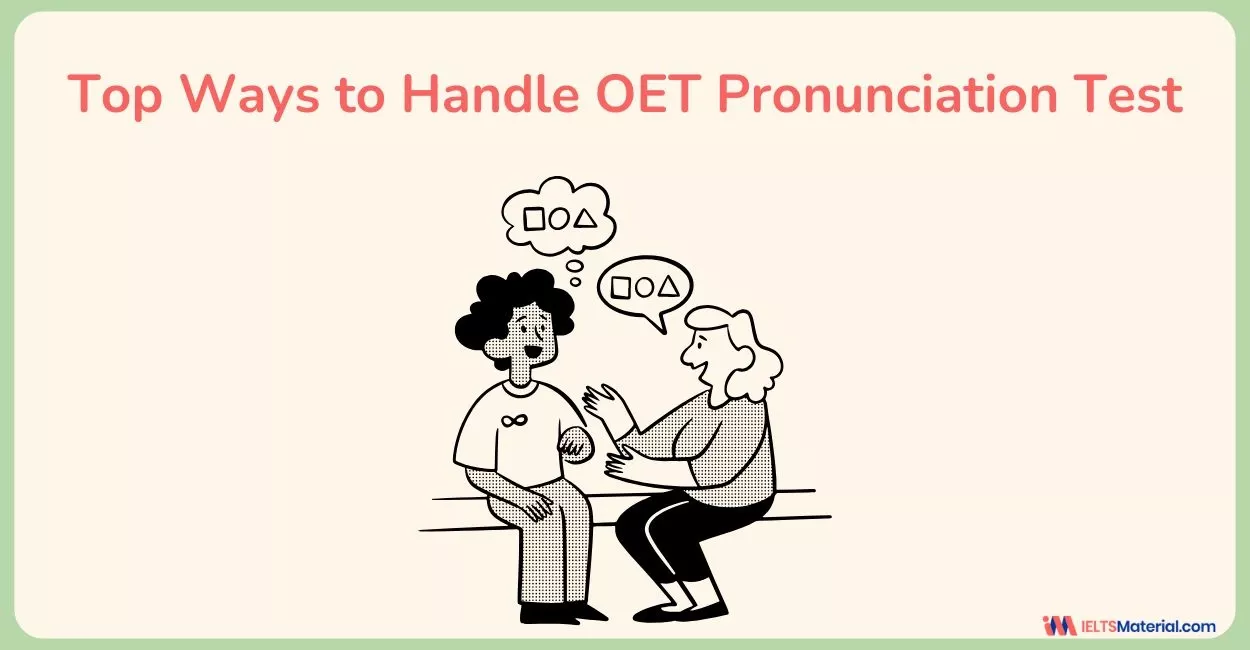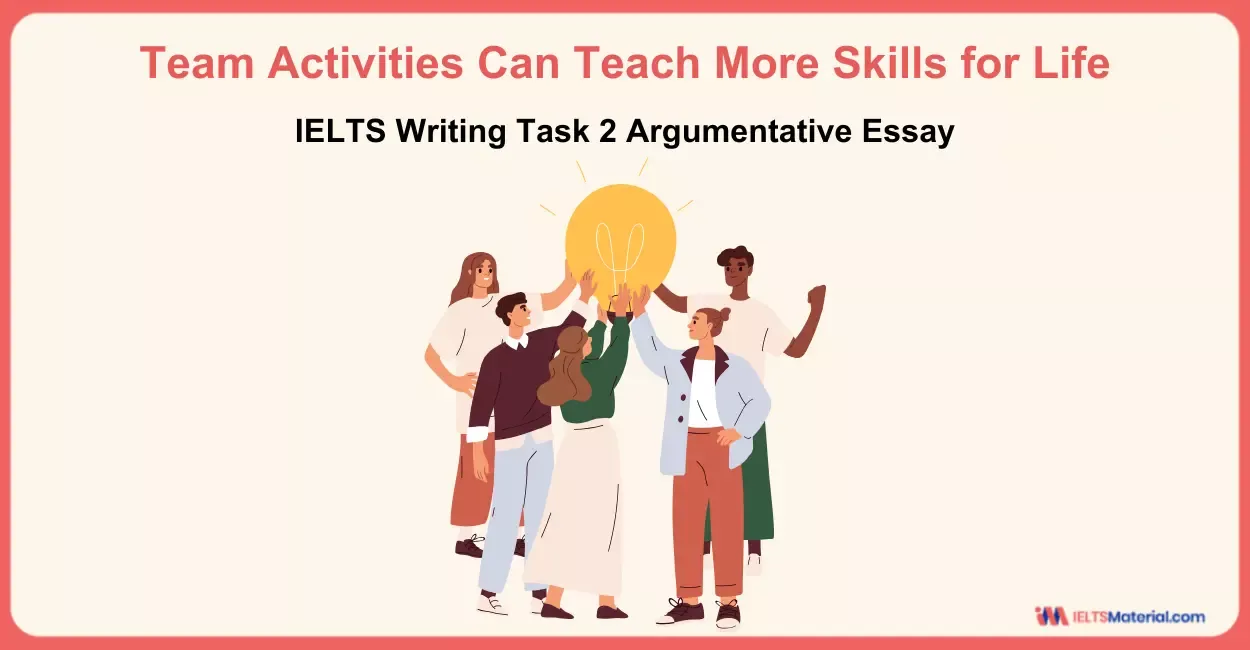IELTS Band Score: How to Calculate Your IELTS Score?
Curious about the band scores in IELTS exam? Discover the IELTS Band Score: How to Calculate Your IELTS Score and dive into the score calculation, understanding overall band scores, and tips to improve your band scores and achieve a band 8+.
Table of Contents

Limited-Time Offer : Access a FREE 10-Day IELTS Study Plan!
The IELTS Band Score reflects your English language proficiency level, ranging from non-user (band score 1) to expert (band score 9). Since the band score plays a vital role, it is important that you understand the process by which your score would be calculated in all four modules. This score is widely utilized by universities, employers, and organizations where the required IELTS exam band scores would differ based on the specific institution or purpose of the test.
The band scores of the IELTS Exam are designed to be user-friendly and align with the Common European Framework of Reference for Languages (CEFR). With a strategic plan to consistently practice all four sections and constantly note the progress level, you will not only build confidence but also improve your band scores.
Look at All You Need to Know about CEFR vs IELTS Score Conversion 2025 to gain a better understanding.
What is the IELTS Band Score Calculator?
Each section of the IELTS exam is scored on a scale of 1 to 9, and the overall band score is calculated by averaging scores from the four test sections such as Listening, Reading, Writing, and Speaking. So, in order to use the IELTS band score calculator, you need to learn about how the IELTS band score for each section is calculated. However, the calculation would vary based on the type of exam, such as the IELTS Academic or General Training. Therefore, it is vital that you first understand which test you are opting for to better understand the calculation.
Remember that these scores show how good you are in English and can be used by universities and professional bodies, including nursing councils and healthcare regulators. A high band score would determine your ability to communicate effectively in real life in English.
Let's check out the video below to understand how the IELTS band scores work and how it is calculated.
How to Calculate IELTS Band Score in Individual Module?
Since the IELTS Exam Pattern includes four modules, you need to first be familiar with how each section will be assessed. Focusing on them individually would help you to level up your preparation and target each area where you need to improve. Let' s check out how each section is scored and have a look at the sectional IELTS band score calculator or band descriptors before moving to the overall IELTS band score.
1. IELTS Listening Band Score Chart
The IELTS Listening includes 40 questions in total which are divided into 4 sections where you will encounter 10 questions in each section. In the exam, there is no negative marking and no points are deducted for incorrect answers. As a result, the IELTS Listening band score is calculated according to the number of correct answers as depicted in the listening band score chart below.
|
Number of correct answers |
Band Score |
|
39-40 |
9 |
|
37-38 |
8.5 |
|
35-36 |
8 |
|
32-34 |
7.5 |
|
30-31 |
7 |
|
26-29 |
6.5 |
|
23-25 |
6 |
|
18-22 |
5.5 |
|
16-17 |
5 |
|
13-15 |
4.5 |
|
11-12 |
4 |
Kickstart your IELTS preparations now with our experts! Book a FREE Demo!
2. IELTS Reading Band Score Chart
Just like the listening module, the band score for IELTS Reading is determined by the number of correct answers out of the total 40 questions which are divided into 3 sections. There is no negative marking or deduction of points for wrong responses as well. Therefore, it is suggested to focus on understanding the question types along with its strategies to achieve a higher band score in reading.
However, the format of this module is different for IELTS Academic and IELTS General Training. The number of sections stays the same which are 3 sections but in Academic, all these sections would have larger and academic-related passages which in the General Training, you will encounter shorter or multiple passages in the first two sections and one large passage in the third section. Due to this, the scoring system differs where the band score changes according to the number of correct answers. Look at the table below to learn about the distribution of band scores for these two IELTS types.
|
Number of correct answers (Academic) |
Number of correct answers (General) |
IELTS Band Score |
|
39-40 |
40 |
9 |
|
37-38 |
39 |
8.5 |
|
35-36 |
37-38 |
8 |
|
33-34 |
36 |
7.5 |
|
30-32 |
34-35 |
7 |
|
27-29 |
32-33 |
6.5 |
|
23-26 |
30-31 |
6 |
|
19-22 |
27-29 |
5.5 |
|
15-18 |
23-26 |
5 |
|
13-14 |
19-22 |
4.5 |
|
10-12 |
15-18 |
4 |
|
8-9 |
12-14 |
3.5 |
|
6-7 |
9-11 |
3 |
|
4-5 |
6-8 |
2.5 |
Not sure where to start? Sign up for FREE IELTS online classes and gain access to the latest learning materials and IELTS exam strategies!
3. IELTS Writing Band Score Descriptors
The IELTS Writing consists of two tasks, and your IELTS writing tasks will be individually evaluated by the examiner, based on four criteria. You must also note that the weighting of task 2 is double the weightage of task 1. Therefore, you must focus on each task along with the types of the questions to get a higher band score. Even though there is only one question given in each task, you still need to be aware of all the different question types to level up your preparation.
Since task 1 is different in Academic and General Training, it is important to know the structure for the specific exam that you are taking. In the General Training, you will be asked to write a letter while in IELTS Academic Writing Task 1, you will need to analyse the data provided. Let's see the four criteria based on which you will be assessed in your writing module.
Each of these criteria accounts for 25% of the total score. Since the General writing task 1, which is a letter-writing task, is much simpler than the Task 1 for IELTS Academic, a report writing task, the marking for Task Achievement differs significantly. For the General Training letter, this parameter will be assessed based on the structure of the letter, tone, and elaboration of the bullet points. On the other hand, for the Academic, you will need to provide comparison and analysis of the given data along with the structure of the report. However, it remains the same for the other three criteria.
Let’s check out what each of these descriptors means for the Academic Writing Task 1 in the table below.
|
Band |
Task Achievement |
Coherence & Cohesion |
Lexical Resource |
Grammatical Range & Accuracy |
|
9 |
Fully satisfies all task requirements; clear overview; well-supported key features |
Information logically organized; cohesive devices used naturally |
Wide range of vocabulary; precise word choice; rare errors |
Wide range of accurate structures; error-free throughout |
|
8 |
Covers all requirements; clear overview; highlights key features |
Sequences ideas logically; rare lapses in cohesion |
Wide vocabulary; occasional inaccuracies |
Range of complex structures; mostly error-free |
|
7 |
Covers requirements; clear overview; details mostly well selected |
Clear organization; appropriate cohesion; minor errors |
Sufficient vocabulary; some less common words; occasional errors |
Variety of structures; some errors, but meaning is clear |
|
6 |
Addresses task with some inaccuracies or omissions; overview may be unclear |
Arranged logically; cohesion may be faulty or mechanical |
Adequate vocabulary; errors in word choice and form |
Some complex structures; frequent grammar errors |
|
5 |
Generally addresses task; may be unclear or irrelevant; overview missing or inaccurate |
Lacks logical progression; overuse of linking devices |
Limited vocabulary; frequent repetition; errors affect meaning |
Limited range; frequent errors; affects understanding |
|
4 |
Fails to address task properly; little or no clear overview |
Poor organization; ideas are not connected |
Very limited vocabulary; frequent errors |
Limited sentence forms; frequent grammar issues |
|
3 and below |
Severe underachievement or misunderstood task |
Minimal coherence |
Extremely limited or memorized vocabulary |
Frequent errors; very limited range |
Since in the question given in the IELTS General Writing Task 1 would be different, the band descriptors would also vary. Even though the name of the parameters stay the same, you will still need to understand the descriptors to be familiar with the way your scores will be calculated. Let’s look at the table below for the band score calculation for the General Training Writing task 1.
|
Band Score |
Task Achievement / Response |
Coherence and Cohesion |
Lexical Resource |
Grammatical Range and Accuracy |
|
9 |
Fully satisfies all requirements of the task; clearly presents a fully developed response |
Uses cohesion in such a way that it attracts no attention; paragraphs are skilfully managed |
Uses a wide range of vocabulary with natural and sophisticated control |
Uses a wide range of structures with full flexibility and accuracy; rare minor errors |
|
8 |
Covers all requirements clearly and appropriately; presents a well-developed response |
Sequences information and ideas logically; manages all aspects of cohesion well |
Uses a wide range of vocabulary fluently and flexibly; rare errors |
Uses a wide range of structures; mostly error-free with only occasional slips |
|
7 |
Covers the task; presents a clear purpose and tone; may have slight underdevelopment |
Logically organizes ideas; uses cohesive devices effectively |
Uses a sufficient range of vocabulary with some flexibility; occasional inaccuracies |
Uses a variety of structures with good control; some grammatical errors may persist |
|
6 |
Addresses the task with a clear purpose, though may be uneven; some irrelevant details |
Arranges information clearly but cohesion may be mechanical or faulty at times |
Adequate vocabulary to convey meaning; some errors in word choice or form |
Limited range of grammar structures; errors may cause occasional confusion |
|
5 |
Generally addresses the task; may be unclear in tone or partially inappropriate |
Lacks logical sequencing; limited use of cohesive devices |
Limited vocabulary; frequent repeat |
Frequent errors |
Since in the IELTS Writing Task 2 is the same for both Academic and General, you will be marked in a similar pattern based on the band descriptors. Even though there are different types of essays, you will only get only one essay in the question. However, you need to be aware of all of them along with their structures so that you can achieve a higher band score.
The table below shows the band descriptors for IELTS Writing Task 2.
|
Band Score |
Task Response |
Coherence & Cohesion |
Lexical Resource |
Grammatical Range & Accuracy |
|
9 |
Fully addresses all parts of the task; presents a well-developed position with relevant ideas |
Uses cohesion in a natural and seamless way; paragraphing is skilful |
Wide range of vocabulary; uses idiomatic language accurately |
Uses a wide range of structures with full flexibility and accuracy |
|
8 |
Covers all parts of the task well; presents a clear and well-supported argument |
Sequences ideas logically; cohesive devices are used effectively |
Uses less common vocabulary fluently; rare errors in word choice |
Majority of sentences are error-free; complex grammar used effectively |
|
7 |
Addresses all parts of the task; presents a clear position throughout |
Logically organises ideas; uses cohesive devices appropriately, though there may be some under-/over-use |
Shows good control of vocabulary; occasional errors in word choice or collocation |
Uses a variety of complex structures; some grammatical errors persist |
|
6 |
Addresses the task, but may not fully develop all parts; presents a relevant position |
Arranges information coherently; cohesive devices may be faulty or mechanical |
Adequate vocabulary; errors in word choice, repetition, or awkward phrasing |
Some complex sentence use, but with frequent errors; limited accuracy |
|
5 |
Addresses the task only partially or with irrelevant detail; position may be unclear |
Lack of clear progression; limited or incorrect use of cohesive devices |
Limited vocabulary; frequent errors and word choice issues |
Limited range of grammar; frequent mistakes impact meaning |
|
4 |
Responds minimally to the task; presents unclear or inappropriate ideas |
Ideas are difficult to follow; cohesion is weak or absent |
Basic vocabulary; frequent repetition and errors |
Very limited grammar use; frequent, noticeable errors |
|
3 and below |
Fails to address the task; may be difficult to understand |
Ideas lack organisation; no use of cohesive devices |
Very restricted vocabulary; difficult to convey meaning |
Grammar errors severely impact communication |
Grab the Tips & Tricks for cracking IELTS today to ace the IELTS exam with a band 8+.
In order to calculate your overall writing band, you can follow the calculation given in the table below.
| Writing Task Parameter | Writing Task 1 Band Score | Writing Task 2 Band Score |
|
Task Achievement |
7 |
7 |
|
Coherence and Cohesion |
7 |
7 |
|
Lexical Resources |
7 |
7 |
|
Grammatical Range and Accuracy |
7 |
7 |
|
Total Band Scores |
28 |
28 |
Since the band scores for writing task 2 is double, the band scores need to be calculated twice for part 2 and only once for part 2. The table below showcases the calculation.
|
Writing Task 1 Band Score |
28 |
|
Writing Task 2 Band Score |
28 x2 |
|
Calculation |
[(Writing task 1 band score + Writing task 2 band score x 2)/Total number of parameters (4 for Writing task 1 + 2 times for Writing Task 2)] [(28 + 28x2)/12] |
|
Final Writing Band Score |
7 |
4. IELTS Speaking Band Score Descriptors
Similar to the writing section, the band score for IELTS Speaking is also calculated based on four criteria, each of which accounts for 25% of the overall speaking band score. Remember to work on all four criteria so that you can enhance your skills. Along with that, since this section is divided into three parts, it is suggested that you focus on all three parts equally.
Since all the four parameters assess you with different criteria, it is vital that you take note of that. In this way, you will be able to keep track of your progress level and words towards improving your skills. Take a look at the table below to understand the meaning of each of these descriptors.
|
Band Descriptor |
Details |
|
Fluency and Coherence |
|
|
Pronunciation |
|
|
Grammatical Range and Accuracy |
|
|
Lexical Resource in IELTS |
|
Eager to enhance your IELTS skills? Join our FREE Online Webinar for a targeted practice!
How is the Overall IELTS Band Score Calculated?
With the IELTS band score being valid for two years, the IELTS band score calculation is done using a detailed and standardized process. The overall IELTS band score is calculated by averaging the four individual scores, rounded to the nearest half or whole band. The individual scores are equally weighted.
Here’s an overview of how the scores are determined:
- Raw Scores: In each section, test-takers receive raw scores, which represent the number of correct answers or the quality of performance in the Writing and Speaking section.
- Band Score Conversion: The raw scores are then converted into band scores using a conversion table, which establishes the relationship between raw scores and band scores for each section.
- Section Scores: The band scores obtained in the Listening and Reading sections are determined by the number of correct answers. For example, if a test-taker scores 30 out of 40 correct answers, the corresponding band score is determined based on the conversion table.
Go through the following example for better understanding how the IELTS band score calculator works.
Example: IELTS Band Score Calculation
A test-taker has received the following IELTS band scores in each section:
|
Listening Band Score |
Reading Band Score |
Writing Band Score |
Speaking Band Score |
|
7.5 |
7.0 |
6.5 |
7.0 |
To calculate the overall IELTS band score, we first sum these scores and then divide by 4.
Overall IELTS band score = (Listening score + Reading score + Writing score + Speaking score) / 4
As per the individual scores of the IELTS sections, the overall IELTS band score of this person is 7.5+7.0+6.5+7.0=28/4 =7.0. It indicates that the test-taker is a ‘Good user’ of English.
Overall IELTS Band Score Rounding
Sometimes, the overall IELTS band score ends up in decimals, like 7.75, 6.25, etc. In such cases, certain rules are followed to come up with the final IELTS band score. Check out the rules and examples given below for an in-depth explanation.
- If the average of the four scores ends in 0.25, the overall band score is rounded up to the next half band.
- If the average of the four scores ends in 0.75, the overall band score is rounded up to the next whole band.
- If the average of the four scores is less than 0.25 or 0.75, the overall band score is rounded down.
Example for Overall IELTS Band Score:
Let us understand the above rule with the help of some examples.
- If a candidate gets 6 in IELTS Listening, 7 in Reading, 8 in Writing, 6 in Speaking, the total score is (6+7+8+6)/4 = 6.75. As per the rounding rule, 6.75 will be rounded to the next whole band, which in this case is 7. So, the candidate will get an overall band score of 7.
- If a candidate’s score is IELTS Listening 6, IELTS Reading 7, IELTS Writing 8, IELTS Speaking 8, then the total score is (6+7+8+8)/4 = 7.25. According to the rule, it will be rounded up to 1/2 and then the final band they will receive is 7.5.
- But if a candidate gets 6 for Listening, 6.5 for Reading, 6 for Writing, and 6 for IELTS Speaking, the total score is (6+6.5+6+6)/4 = 6.125. The rule is to round down to the nearest full band score. So they will get 6.
- If a candidate gets 6.5 in listening, 6.5 in reading, 6.5 in writing, and 7 in speaking, the total score is (6.5 + 6.5 + 6.5 + 7) / 4 = 6.625. So, as per the rules, the band score will be rounded down to the nearest half-band score – i.e. the candidate will get 6.5.
It’s not that burdensome if one gets the hang of it. And, don’t forget to apply rounding rules when calculating the final IELTS band score!
Want to ace the IELTS exam with band 8+? Our experts can help you achieve your target score with our Free Webinar now.
Understanding Proficiency Level from Overall IELTS Band Scores
Now, it is important to be aware of what the IELTS band score tells about the candidate’s English language proficiency. Have a look at the descriptions below in the table to understand what each band score would mean in terms of your language proficiency level.
|
Band Score |
Proficiency Level |
Description |
|
9 |
Expert |
Fully operational command of the language; English use is appropriate, accurate, and fluent with complete understanding. |
|
8 |
Very Good |
Fully operational command with occasional inaccuracies and inappropriate usage; May misunderstand some things in unfamiliar situations but handles complex arguments well. |
|
7 |
Good |
Operational command of the language with occasional inaccuracies and misunderstandings; Generally handles complex language well and understands detailed reasoning. |
|
6 |
Competent |
Effective command despite some inaccuracies and misunderstandings; Can use and understand reasonably complex language, especially in familiar situations. |
|
5 |
Modest |
Partial command of the language, copes with overall meaning in most situations; Likely to make many mistakes but can handle basic communication in their field. |
|
4 |
Limited |
Basic competence limited to familiar situations; Frequent problems in understanding and expression. |
|
3 |
Extremely Limited |
Conveys and understands only general meaning in very familiar situations; Frequent breakdowns in communication. |
|
2 |
Intermittent |
Great difficulty understanding spoken and written English. |
|
1 |
Non-User |
No ability to use the language except a few isolated words. |
|
0 |
Did Not Attempt the Test |
Did not answer the questions. |
How to Improve Your IELTS Band Score?
There are a number of things you can do to improve your IELTS band score. Here are a few IELTS Exam Preparation Tips for Band Score of 8+:
- Start by taking an IELTS practice test: This will give you an idea of your current level and identify your strengths and weaknesses. The more you practice, the better you will become at understanding and using English. There are many resources available to help you practice for the IELTS, including online IELTS practice tests, textbooks, and apps.
- Focus on the skills you need to improve: If you are struggling with listening, for example, you can find listening practice materials online or in books.
- Get regular feedback on your progress: This could be from a tutor, an online course, or a friend or family member who is fluent in English.
- Take a preparation course: If you are serious about improving your IELTS band score, consider taking online preparation courses with IELTSMaterial.com, as their preparatory courses offer expert guidance, tailored strategies, and valuable resources to help you succeed. You will also receive personalized feedback and assessments, interactive lessons, and mock tests.
Knowing your IELTS band score is crucial as it determines your eligibility for universities, immigration processes, and professional opportunities in English-speaking countries. Success in the IELTS relies on understanding how to achieve your target score. It’s essential for IELTS aspirants to know how the overall IELTS band score calculator works, as it will help you set realistic goals and identify areas for improvement.
Also Check:
Frequently Asked Questions
How do I calculate my IELTS Band Score?
What is the normal IELTS band score?
Is an IELTS Reading band score of 5.5 good?
Is 6.25 considered as 6.5 in IELTS?
Does an IELTS Band Score of 6.5 correspond to level B2 or level C1?
Do the scoring criteria differ for IELTS Academic and General Training?
Can the IELTS Band Score of one section lower your overall IELTS score?
Learn everything about IELTS

Start Preparing for IELTS: Get Your 10-Day Study Plan Today!
Explore other IELTS Articles

Kasturika Samanta

Prity Mallick


Nehasri Ravishenbagam
Recent Articles

Kasturika Samanta







Post your Comments
1 Comment